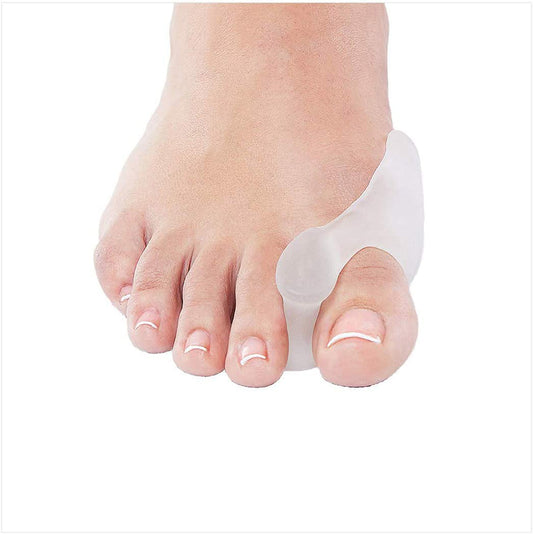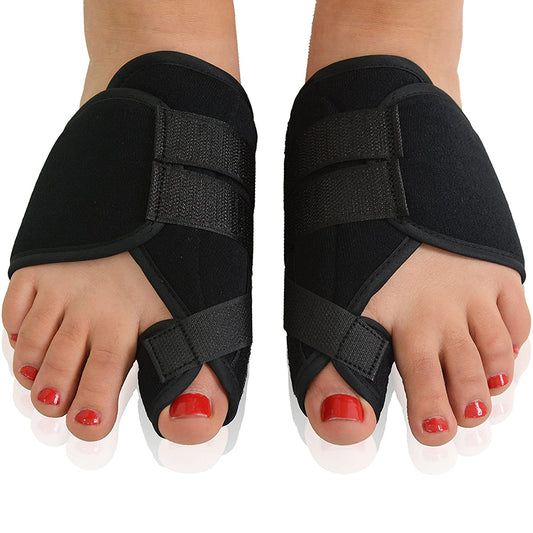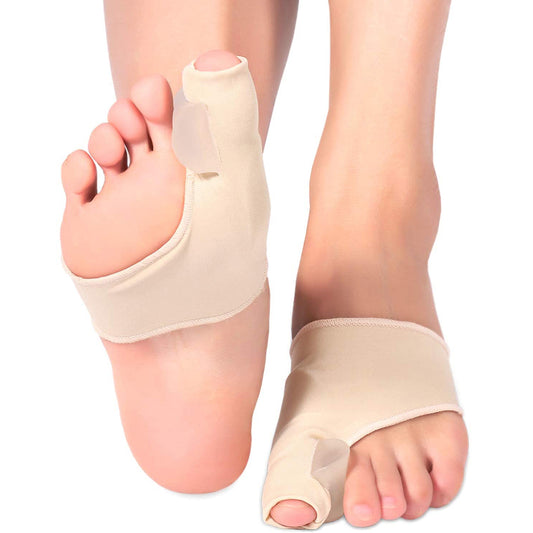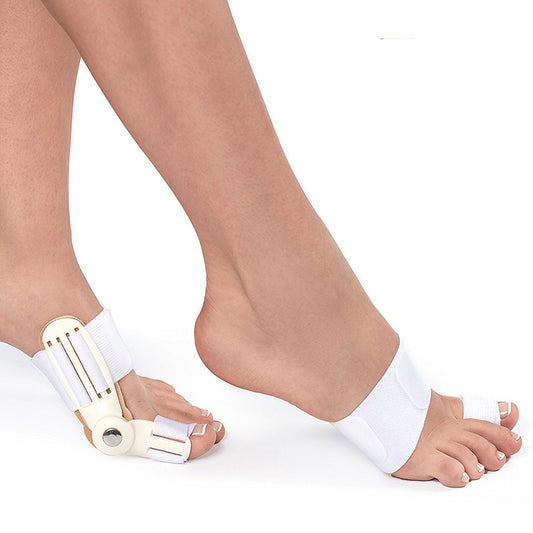-
Original Nighttime Bunion Splints - 1 Pair-Stitched Velcro Bunion Correctors - Bunion Relief for Bedtime - for Men & Women
Regular price $19.99 USDRegular price$30.99 USDSale price $19.99 USDSale -
Bunion Relief Sleeves, Bunion Corrector Big Toe Separator Bunion Straightener Toe Joint Protector with Built-in Silicone Gel Pad for Hallux Valgus (1 Pair)
Regular price $19.99 USDRegular price$29.99 USDSale price $19.99 USDSale -
Bunion Corrector for Men & Women - Orthopedic Bunion Splint, Hallux Valgus Brace
Regular price $19.99 USDRegular price$29.00 USDSale price $19.99 USDSale -

Gel Big Toe Bunion Guards & Toe Spreaders (2 Pieces) - Pain Relief for Crooked, Overlapping Toes
Regular price $9.99 USDRegular price$19.99 USDSale price $9.99 USDSale
Collection: Relief with Bunion Correctors: Orthopedic Splints, Toe Guards, and More
Understanding Bunion Correctors: Who Needs Them and Why?
Living with bunions can be both painful and frustrating, affecting your quality of life and mobility. Whether you're a runner or someone who spends a lot of time on their feet, understanding how bunion correctors function and who they are suitable for is essential. At ZSZBACE, we specialize in creating solutions that blend comfort with functionality, like our Orthopedic Bunion Splint, designed specifically for efficient bunion alignment and relief.
Who Needs a Bunion Corrector?
Bunion correctors are not only for runners but for anyone experiencing discomfort due to hallux valgus, commonly known as bunions. If you're experiencing any of the following symptoms or conditions, you may need a bunion corrector:
- Visible Bunion Formation: A noticeable bump on the side of the foot, near the base of the big toe.
- Toe Misalignment: When the big toe points inward towards the second toe.
- Foot Pain: Especially while wearing shoes or walking.
- Limited Mobility: Restricted movement in the big toe joint.
People who have inherited foot defects, structural abnormalities, or arthritis may find bunion correctors particularly useful. Our range of products, including the Bunion Relief Sleeves, offers solutions for both men and women.
Why Do You Need a Bunion Corrector?
Addressing bunions early can prevent severe complications down the line. Here's why a bunion corrector might be just what you need:
- Pain Relief: Products like our Gel Big Toe Guards provide pain relief by minimizing pressure on the bunion.
- Preventative Care: Corrects toe alignment to prevent further deviation and protect joints.
- Non-Invasive Solution: Offers a non-surgical approach for managing bunions, delaying or even avoiding surgery.
Features and Benefits of Bunion Correctors
Our bunion correctors, crafted with years of research and high-quality materials, provide various benefits:
Key Features
- Adjustable Design: Ensures a secure and comfortable fit for all-day wear.
- Durability: Made from top-grade materials that ensure long-lasting wearability.
- Breathable Fabric: Keeps your foot comfortable without irritation.
- Silicone Gel Pad: Integrated to provide soothing support and cushioning.
Lifestyle Benefits
- Improved Alignment: Gradually helps in aligning the big toe for reduced pain and enhanced foot structure.
- Enhanced Mobility: Alleviates symptoms allowing for more comfortable walking and daily activities.
- Discreet and Comfortable: Easily worn with various styles of footwear without being noticeable.
Questions and Answers from Our Community
What Is the First Sign I Need a Bunion Corrector? If you notice a persistent bump or experience toe misalignment accompanied by pain, it’s time to consider a bunion corrector.
Who Can Benefit Most from Your Products? Individuals with a family history of bunions, flat feet, or who spend a lot of time standing or walking might find our products particularly beneficial.
How Do Bunion Correctors Work? They help reposition the toe into its natural alignment either by gentle pressure or by providing structural support, which reduces discomfort and prevents further misalignment.
Can I Wear Bunion Correctors with Shoes? Yes! Our products such as the Bunion Corrector Big Toe Separator are designed to fit comfortably with most footwear.
Beyond the Basics: ZSZBACE's Commitment
We at ZSZBACE pride ourselves on our expert craftsmanship and customer satisfaction. With extensive experience in both manufacturing and R&D, our bunion correctors are not only effective but backed by thorough research and development processes. Coupled with professional service and after-sales support, investing in our product means prioritizing both quality and care for your foot health.
If you're wrestling with bunion discomfort, explore our lineup of made-to-fit bunion solutions and find relief today!




